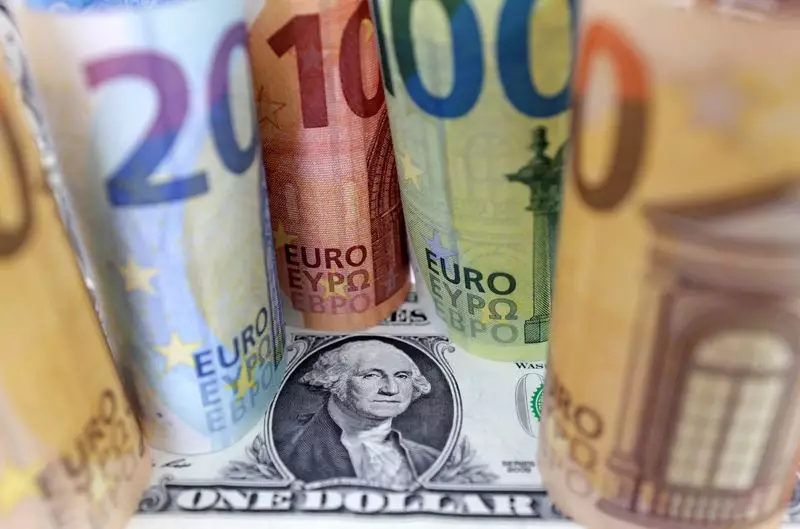The financial markets are grappling with cautious optimism and uncertainty as the U.S. dollar remains firm against the Japanese yen and other key currencies. On this particular Wednesday, investors are poised for significant developments as they anticipate the outcomes of central bank meetings, especially the U.S. Federal Reserve (Fed) and the Bank of Japan (BOJ). The Fed’s two-day policy review is expected to conclude with a 25-basis-point interest rate cut, a move that has been almost universally predicted by market players, with projections indicating a staggering 97% expectation as per the CME’s FedWatch tool. This high level of certainty reflects the market’s collective sentiment about the direction of U.S. monetary policy.
In the backdrop of these developments, financial analysts and economists are closely examining the Fed’s new economic forecasts, which are set to accompany the interest rate decision. One critical aspect of the Fed’s forthcoming assessment revolves around its monetary tightening plans slated for 2025. Analysts like Tony Sycamore from IG suggest there could be a moderation in the pace of future cuts. If the Fed adjusts its projections to suggest only three rate cuts instead of four, this may signal a more hawkish tone than markets currently expect. Such insight could lead to significant ripples across the global currency markets, as traders align their strategies in response.
On a practical level, recent data indicating a resilient U.S. economy is also influencing investor sentiment. For instance, a notable 0.7% increase in retail sales during November surpassed expectations and was largely driven by enhanced sales in the automotive sector and online shopping platforms. Notably, these economic indicators serve to further solidify the dollar’s standing, providing it with a robust backdrop as it navigates upcoming policy shifts.
The global focus is not solely on the U.S.; many investors are also weighing the attitudes of other central banks. Speculation surrounding the BOJ’s positioning has shifted dramatically leading into its meeting, with diminishing expectations for an imminent interest rate increase. Reports hint towards a more conservative approach from the BOJ, which has pushed many investors to revise their rate hike expectations, particularly looking towards January instead. Additionally, the Bank of England is anticipated to maintain its current rates, creating a consistent theme of caution among central bank policies worldwide.
In the backdrop of these anticipated decisions, other currency dynamics are also coming into play. The British pound has shown resilience, trading nearly flat against the dollar at $1.27095 as market participants await key inflation data. The Euro has likewise remained relatively stable at $1.0502, indicating minor adjustments amidst the shifting landscape.
Analyzing the broader currency market, the U.S. dollar index noted a slight decline, down 0.04% to 106.89 after peaking at 107.18, indicative of market reactions to evolving economic narratives. Notably, fluctuations in U.S. Treasury yields have been influential, prompting a slight pullback for the dollar against the yen. This interplay of global currencies often illustrates the underlying interconnectedness and reactions to centralized policies.
Other currencies such as the Swedish crown and the Norwegian krone are also caught in this shifting current, with the Riksbank seen poised to potentially cut rates while the Norges Bank may opt for stability. This divergence illustrates the varied economic landscapes facing these countries, burdened by different inflationary pressures and growth expectations.
Beyond the primary developed economies, there are challenges surfacing for emerging markets. The offshore Chinese yuan, for instance, is inching closer to a 13-month low against the dollar amid rising pessimism regarding the Chinese economic outlook. In addition, the Australian dollar, often viewed as a bellwether for Asian economies, has also seen declines, reflecting broader concerns about regional economic stability.
Even in the cryptocurrency sphere, which has typically been characterized by volatility, Bitcoin has taken a hit, further underlining the market’s shifting sentiments across diverse asset classes.
As the global economic landscape continues to unfold with numerous pivotal central bank meetings on the horizon, investors are adopting a wait-and-see approach. The outcome of the Federal Reserve’s decision is particularly critical, with the potential to set the tone for monetary policy in the currency markets well into the coming year. Ultimately, astute investors will remain vigilant, analyzing incoming data and central bank announcements to navigate the fluctuating tides of the financial world.

